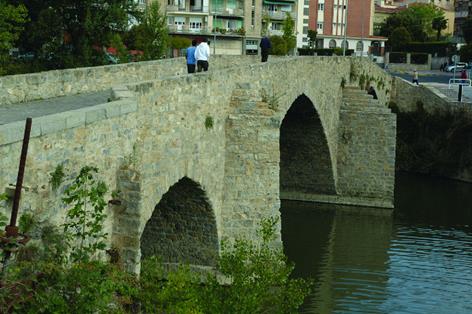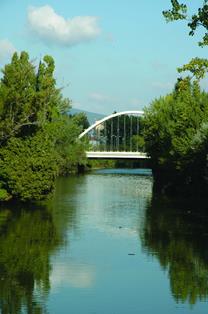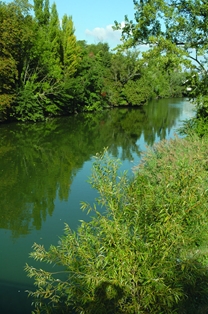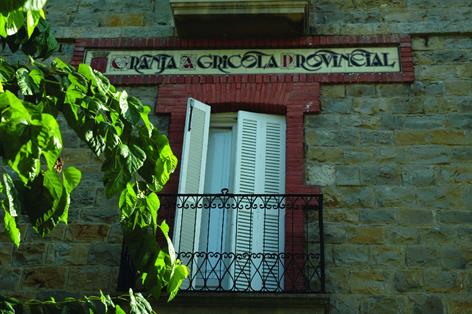Plazaola Nature Trail. Trinitarios Section
Description

A pleasant walk with a festive air
Plazaola is located in the valley of Leitzaran, a spot where more than a century ago there was an iron mine that transported material to Andoain via a railway line which was subsequently expanded as a passenger train that covered the San Sebastián-Pamplona line. This service fell into disuse when road transportation began to prevail and, although the tracks were dismantled in the late 50s, the old road platform of this railway, which blackened the faces of its passengers with soot owing to the many tunnels on its route, was converted into a public pedestrian area in the year 2000.
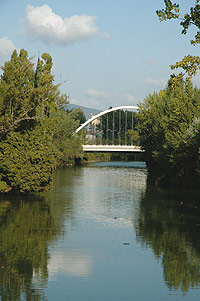
The trail begins at the end of Biurdana park, near on the roundabout of Calle Biurdana, next to the crossroads with the lane that goes to the San José cemetery. An information panel close to the River Arga, in the area known as Trinitarios, marks the beginning of this route.
The initial leg is paved with red blocks and is bordered on the right by walls and fences that separate it from diverse public facilities, such as a sports centre, as far as the tunnel under Avenida de Guipúzcoa.
On the left, it descends a hillside to the plain of the River Arga, where you can see the riverside of the Residencia de las Oblatas and the district of Rochapea. Due to fact that this Nature Trail is used frequently by the people of Pamplona, and in order to avoid causing any annoyance, we recommend following it on foot.
A little further on, you will come to a tunnel pertaining to the original railway line route. After crossing it, you reach a modern pedestrian bridge over the River Arga which marks the end of this short route of less than a kilometre. From this point, you can see the hanging bridge of Oblatas. From here onwards, the recent restoration of the railway route as a path for cyclists and pedestrians allows trail users to continue walking until they reach the city’s exit, after crossing under the north ring road.
Sites of interest
Map
Puntos de Interés
Cultura
Hidrografía
Infraestructura
Municipio
Profile
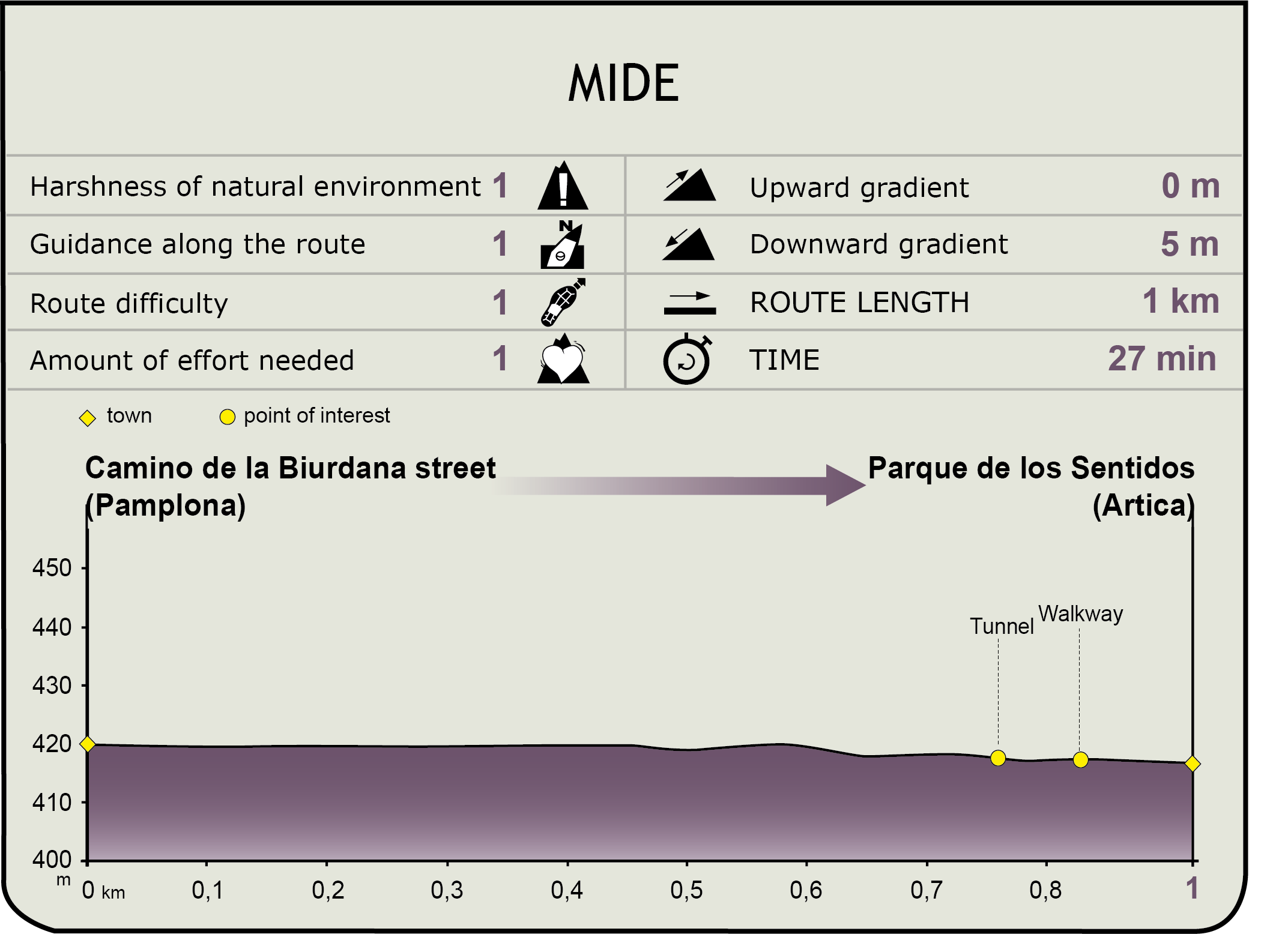
MIDE (Method for the Information of Excursions)
Featured
Further information
Pamplona - Iruña
The capital city of Navarre, with some 200,000 inhabitants, is the nerve centre of the Autonomous Region of Navarre. The city, famous at the global level for its antonomastic fiesta of the “Sanfermines”, boasts a significant historic legacy which is a must-see. Coupled with a group of monuments in the old district, which is crossed by El Camino de Santiago or St. James’ Way, the Plaza del Castillo and the Ciudadela, buildings as emblematic as the Palacio de Navarra, the Cathedral, the churches of San Nicolás and San Cernin, the Museum of Navarre, the Oteiza Museum, the General Archive of Navarre, the Gardens of La Taconera, the Baluarte, the Planetarium, the two university campuses, the Town Hall and the Parliament stand out.
Pamplona, a city in which the River Arga has been restored as a city park, can boast that it is the capital with most trees and square metres of green area per inhabitant in Spain.
River Arga riversidepark
The River Arga is a tributary of the River Aragón which is itself a tributary of the Ebro. Its course forms meanders that twist towards and away from the city of Pamplona, making for a walk that can boast some marvellous landscapes.
Pamplona Riverside Park, with an area of one million square metres, is one of the city’s most important green areas. The Park runs parallel to the river and past its most important historic bridges including those of La Magdalena, San Pedro (the oldest in Pamplona), Rochapea and Santa Engracia.
Noáin
Even though the city of Pamplona serves as a hub of the area, the neighbouring villages are full of history and magic. Noáin is barely 15 minutes away from Pamplona by car, and all travellers worthy of this name should always go all over its wonderful historic centre, visit the Church of San Miguel Arcángel and stop at the Parque de los Sentidos (Park of the Senses). This park, as suggested by its name, has been inspired by the senses and its area (25,000 m2) is divided into five spaces, each of them with a different decor. The park also boasts a central lake and a viewpoint from which the travellers may enjoy a wide panoramic view of the landscape.
The Noáin aqueduct is another great attraction of this city. The works were carried out between 1783 and 1790 for bringing drinking water to the city of Pamplona. The aqueduct, which is nearly 17 km long, starts at the Subiza spring and ends in Pamplona, running along another spots in Tajonar, Badostáin and Medillorri. It once was a 1,245 metres long aqueduct over 97 stone and brick arches, of which 94 are preserved today, and it has columns reaching up to 18 metres in height and a channel on the top. Its most emblematic part is located in the municipality of Noáin.
